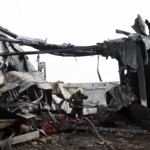The construction industry is known to be popular for its historically poor health and safety records. Buildings or site work can present a great number of risks both in construction and operation. There are several duties placed on individuals involved in designing, constructing, and operating buildings to control those risks.
This content piece will explore some common yet important laws and regulations employers and employees need to be mindful of while at the construction site.
What are Regulations?
An act or a mechanism for the relevant minister to introduce various statutory instruments is known as regulations.
There are some general safety legislations and regulations that apply to all businesses and industries including construction. Besides this, some additional pieces of legislation specifically aimed at the construction sector.
Let us discuss them in detail.
Top Legislations Applied to Health & Safety at Construction Sites
The list includes major legislations that can be applied to health and safety within the construction sector:
- Health and Safety at Work Act
It is not primarily a regulation but it is an act under which safety regulations are built. It describes the general duties employers have towards their employees and the general public to prevent their health and well-being.
- The Construction Design and Management Regulations
Also known as CDM regulations, these regulations take a risk management approach to identify the hazards residing in the construction sector and take vital control measures to prevent them. The CDM regulations apply to every construction project despite the size and nature of the work.
- Lifting Operations and Lifting Equipment Regulations (LOLER) 1998
The LOLER regulations explain the use of cranes, lifting devices, or other applications. These regulations require responsible persons to undertake a thorough examination of the work equipment, use clear signage on machines, and provide adequate training to the workers undertaking such work.
- Working at Height Regulations
The Working at Height Regulations specifies the safety equipment and safe use of ladders, scaffolds, or other relevant equipment at work. Employers must take into account a worker’s safety who is working at a height on a construction site. They must provide them with safety equipment including double guardrails or toe boards and adequate working at height training.
- Control of Asbestos Regulations 2012
Asbestos within a construction environment is the biggest killer, although it is banned by the government, still is in use in some building sites.
The Control of Asbestos Regulations provides detailed guidelines on the duty to implement best practices to mitigate the risk of asbestos exposure in workers.
The duty to manage asbestos falls on the employers and managers under the law to take full accountably to identify, controlling, and manage asbestos at work.
- Manual Handling Operations Regulations
The Manual Handling Operations Regulations 1992 explains the inherent risks when workers’ tasks involve lifting, loading, or moving object as part of their job. Lifting and loading operations can be conducted within any sector besides construction. So, employers are obliged to conduct necessary risk assessments and train their workforce to implement safety principles at work.
- Electricity at Work Regulations
The Electricity at Work Regulations provides a set of guidelines to install, maintain, and updating electrical work, systems, and processes within the construction environment.
- Control of Noise at Work Regulations
The Control of Noise at Work Regulations 2005 identifies the irreparable damage to hearing due to work operations. It mandates employers and managers to take necessary actions and provide suitable protective equipment to control and minimize the risk.
- Health & Safety (First Aid) Regulations
Providing first aid in case of emergency is a necessity in every workplace. So, employers must be familiar with Health and Safety (First Aid) Regulations. As the construction sector is high at risk, the first aid regulations, processes, and requirements must also be top-notch.
- Confined Spaces Regulations
Confines Spaces Regulations apply to employers and their workers whose work involves working in dangerous places. It requires employers to take charge of their worker’s health by providing them with effective control measures and sufficient training.
- Regulatory Reform (Fire Safety) Order
Fires can occur within any workplace or organization; therefore, fire safety laws require every sector including construction workplaces to have effective fire prevention strategies and approaches to control this hazard.
Summary
Any legislation that puts a duty on employers, managers, or business holders to ensure their staff members or workers’ safety is relevant to the construction industry. Therefore, employers are required to take reasonable actions to comply with them and ensure they are providing a safe and secure work area to any one part of their work premises.
The construction sector with no doubt is more prone to accidents, injuries, or ill health, therefore, it requires significant attention and additional preventive measures to control and minimize the health and safety dangers.















